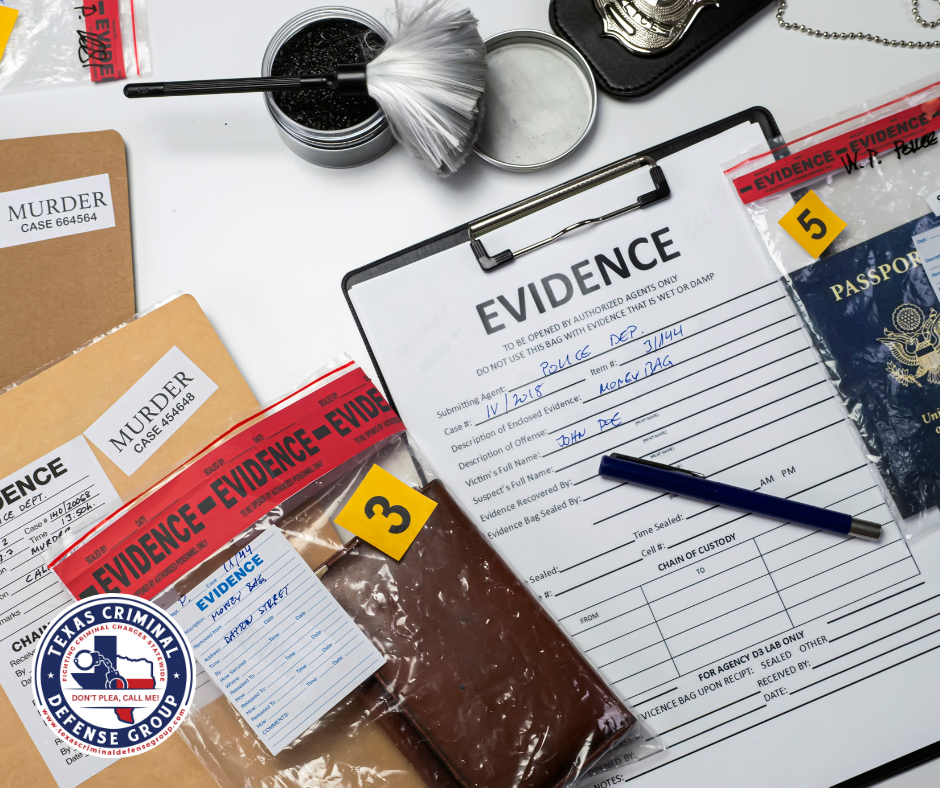
Lack of Evidence in Criminal Cases
Picture a courtroom: tension fills the air as everyone waits for the verdict. The concept of “beyond a reasonable doubt” is crucial here—it ensures that only the guilty are convicted. This isn’t just a legal term; it’s the foundation of our justice system.
The presentation of evidence lies at the core of this standard. It’s not just about presenting facts; it’s about presenting them in a way that convinces a jury or judge. Evidence is what prosecutors use to build their case and what the defense uses to tear it down. The stakes are high, and the outcome can change lives.
In this blog post, we’ll explore what happens when there’s a lack of evidence in criminal cases. We’ll look at what it means, how it impacts the burden of proof, and what it can mean for the accused. Let’s dive into this crucial part of our justice system.
What Is Considered Evidence?
Many people don’t fully grasp what counts as evidence in a criminal case. Evidence can include:
- witness testimonies,
- documents,
- videos,
- audio recordings,
- records,
- and other items presented in court to help the jury decide whether someone is guilty or not.
Interestingly, even the testimony of a single witness can be enough to convict someone if the jury finds it convincing beyond a reasonable doubt.
Defendants can also introduce evidence to challenge the state’s accusations. This can involve presenting witnesses, documents, videos, audio recordings, records, and DNA evidence. Even if the jury initially believes you are guilty, presenting your evidence can make them reconsider.
For example, if the state has a witness claiming you ran a red light and caused an accident, you could present another witness who saw the light was green. This conflicting testimony might create reasonable doubt in the jury’s mind.
Understanding what counts as evidence and how it influences a trial is crucial for anyone involved in the legal system.
Proving Guilt In Criminal Cases
In a criminal case, the prosecution’s job is to prove to the court that the defendant is guilty beyond a reasonable doubt. This means the burden of proof is on the state. They are presumed innocent until proven guilty. The prosecution must provide evidence to demonstrate two key points:
- The accused committed the crime.
- That the accused committed the crime with specific or general intent.
The jury’s decision in a criminal trial must be based only on the evidence presented and should not be influenced by any unfair prejudice or bias. Therefore, having strong and substantial evidence is crucial for the prosecution to secure a conviction.
Types Of Evidence
Understanding the different types of evidence used in criminal cases can help demystify how cases are built and defended. Here are the main types of evidence and some examples of each:
1. Direct Evidence – Direct evidence directly proves a fact without needing inference.
- Eyewitness testimony, video footage of the crime, or an audio recording of a confession.
2. Circumstantial Evidence – Circumstantial evidence indirectly proves a fact through a series of inferences.
- Fingerprints at a crime scene, the defendant’s presence near the crime scene, or phone records showing the defendant’s location.
3. Physical Evidence – Tangible items that are presented in court.
- Weapons, clothing, stolen items, or DNA samples.
4. Testimonial Evidence – Statements made by witnesses under oath.
- An eyewitness account of seeing the defendant at the crime scene, expert witness testimony on forensic findings, or character witness statements.
5. Documentary Evidence – Written or recorded documents that help prove a fact.
- Emails, contracts, bank statements, or text messages.
6. Expert Evidence – Testimony given by individuals with specialized knowledge relevant to the case.
- Forensic experts discussing DNA results, medical professionals explaining injuries, or financial experts analyzing accounting records.
7. Demonstrative Evidence – Evidence that illustrates or helps explain other evidence.
- Maps, charts, diagrams, or reconstructions of a crime scene.
Each type of evidence plays a crucial role in the courtroom, helping to build a narrative for the jury or judge to consider when determining guilt or innocence.
How Does Lack of Evidence Help Me?
Defendants can remain silent and rely on the prosecution’s duty to prove the case beyond a reasonable doubt. However, defense attorneys often highlight insufficient evidence by discrediting the prosecution’s claims or presenting alternative evidence that shows the defendant’s innocence.
For instance, a police report might state that the defendant confessed. But if the recording reveals that the defendant was coerced into confessing after hours of pressure, this undermines the confession’s credibility.
In a domestic violence case, an officer might suggest a narrative to a witness, such as saying, “If you want the defendant punished, you need to tell us how he hurt you.” This kind of prompting can lead to unreliable statements.
It’s important to note that police reports rarely provide the full context. Defense attorneys discredit the prosecution’s evidence in various ways to challenge its sufficiency.
Identifying Weak Points in a Prosecutor’s Case:
When charged with a crime, the prosecution must prove your guilt beyond a reasonable doubt. During pre-trial discovery, prosecutors share evidence they plan to use against you. Your attorney examines these materials for flaws that could introduce reasonable doubt. Here are some common weak points they might look for:
- Insufficient Evidence: Lack of solid evidence or reliance on mostly circumstantial evidence can weaken the case.
- Unreliable Witnesses: Inconsistent, contradictory, or untrustworthy witness testimonies can weaken the case significantly.
- Violation of Rights: Any evidence obtained illegally, like through an unlawful search, can be suppressed, weakening the case.
- Unlawful Arrest: If you were arrested without probable cause, it could indicate a weak case.
- Valid Legal Defense: If the prosecutor can’t prove all elements of the crime beyond a reasonable doubt, the case weakens. For example, acting in self-defense can be a strong defense.
Strong evidence is crucial for the state to convict you. Insufficient evidence could lead to your charge being dropped, a not-guilty verdict, a lesser charge, or a plea deal.
Arrested? Don’t Plea, Call Me!
When evidence is lacking in your case, you have a powerful opportunity to defend yourself effectively. Don’t wait—seek a criminal defense attorney who can meticulously analyze the prosecution’s case, pinpoint its weaknesses, and construct a robust defense strategy. Your freedom and future are at stake. Take action now to secure the best possible outcome.
